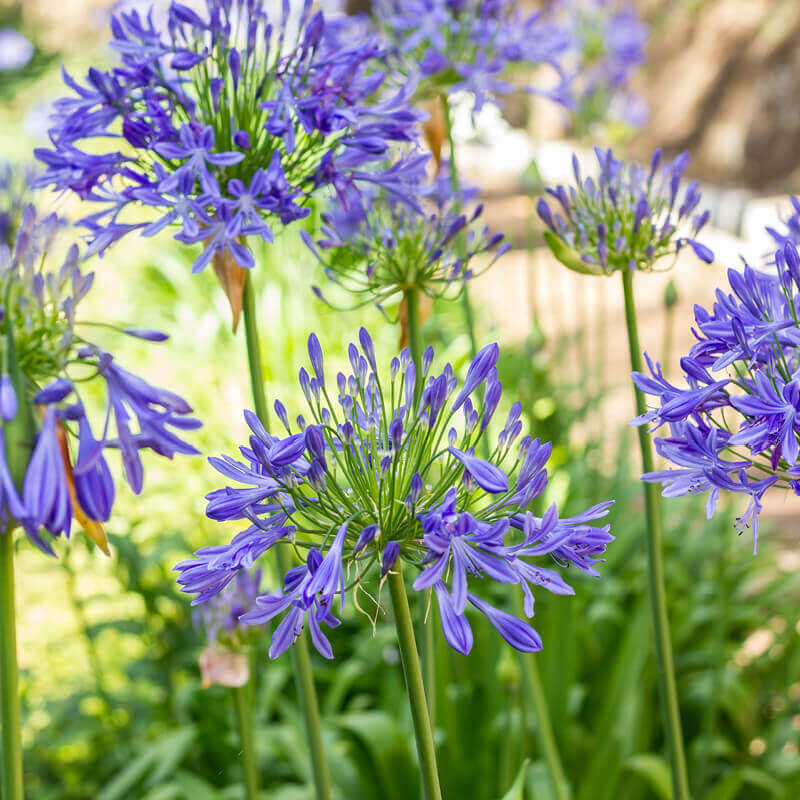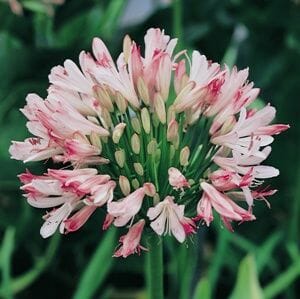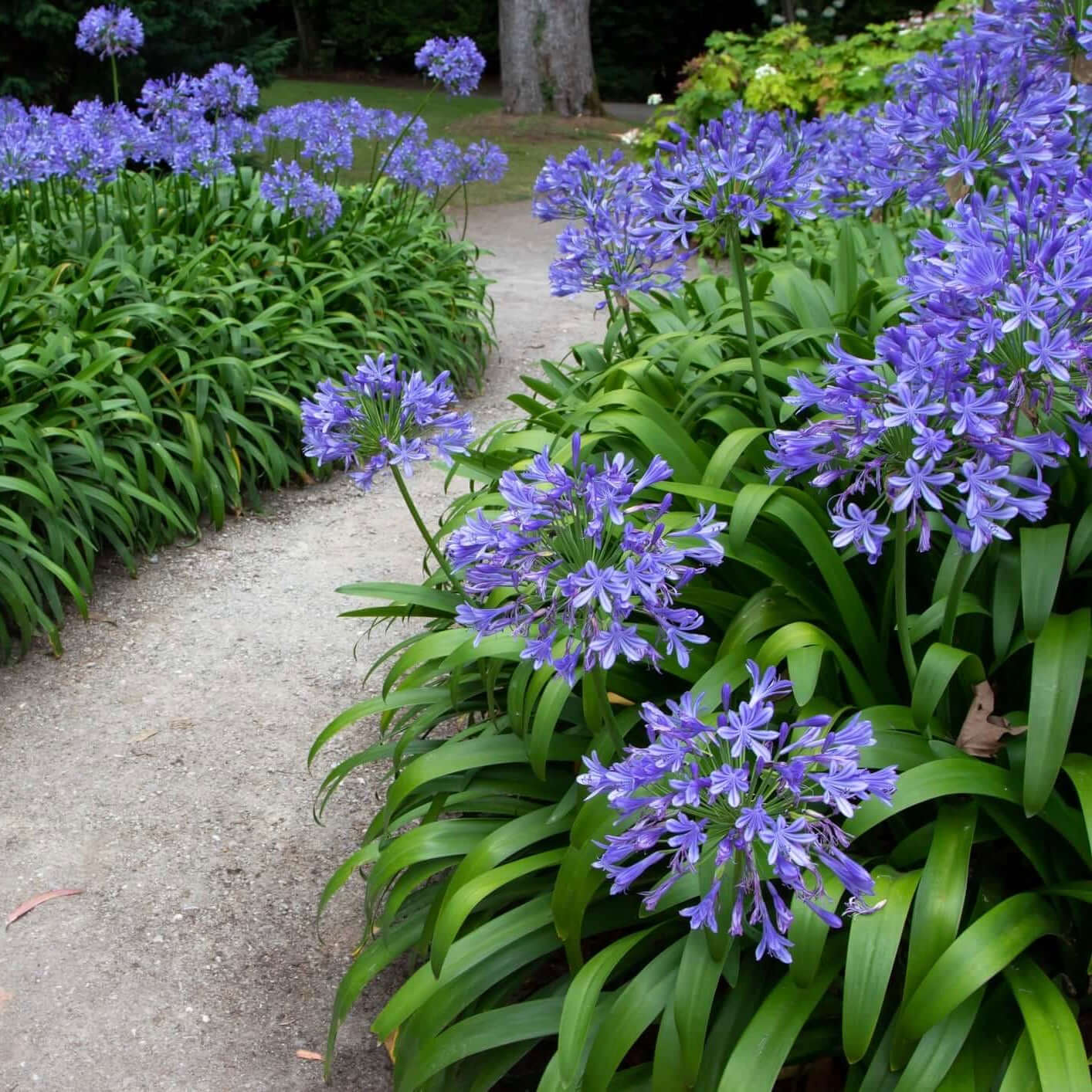Understanding the Art of Agapanthus Care: Essential Actions for Healthy And Balanced Growth and Dynamic Blooms
In the realm of cultivation, the growing of agapanthus stands as a rewarding endeavor for those that seek to support these sophisticated blooming plants. With their striking blooms and elegant foliage, agapanthus has actually recorded the focus of garden enthusiasts worldwide. Nonetheless, attaining ideal development and dynamic blossoms needs a nuanced method that incorporates various vital steps. From selecting the ideal variety to grasping pruning methods, the trip in the direction of growing prospering agapanthus plants is multifaceted and holds the crucial to opening the complete capacity of these organic gems.

Picking the Right Agapanthus Variety

When selecting the ideal Agapanthus selection for your yard, take into consideration factors such as environment viability, flower color, and development routine. Agapanthus, commonly called Lily of the Nile or African lily, can be found in a selection of colors ranging from shades of purple and blue to white. Choose a blossom shade that complements your existing yard combination to create a harmonious landscape. In addition, think about the environment in your region to ensure the Agapanthus variety you select can prosper in your specific problems. Some ranges are more tolerant of chilly temperatures, while others like warmer climates. Understanding the development practice of different Agapanthus selections is critical for proper positioning within your yard. Some ranges have a clumping growth routine, suitable for boundaries or containers, while others have an even more dispersing nature, suitable for ground cover or mass plantings. By thoroughly examining these elements, you can choose the best Agapanthus range to improve the appeal of your yard.
Perfect Growing Problems
Taking into consideration the ideal environmental needs is necessary for successful Agapanthus cultivation. Agapanthus prospers in well-draining dirt with a somewhat acidic to neutral pH degree. When planting, select an area that receives complete sunshine to partial color. In hotter environments, giving some afternoon shade can stop scorching of the leaves. Agapanthus plants are sensitive to cold temperature levels and should be safeguarded from frost during winter months.
To ensure healthy and balanced development and dynamic blossoms, plant Agapanthus bulbs at a deepness of regarding 2-4 inches and area them 8-12 inches apart. Adding organic issue, such as compost, to the soil can improve water drainage and fertility, promoting durable root development. Mulching around the base of the plants assists retain moisture and reduces weed growth. Routine watering is vital, specifically throughout the growing period, to maintain the soil consistently moist yet not saturated.
Watering and Fertilizing Tips
Maintaining proper wetness levels and providing important nutrients are key aspects in the treatment regimen for Agapanthus plants. When it comes to sprinkling Agapanthus, it is critical to strike an equilibrium. These plants like constantly moist dirt however are susceptible to root rot if overwatered.
Feeding Agapanthus is vital for promoting healthy and balanced development and respected flowers. Apply look at this now a balanced fertilizer, such as a 10-10-10 formula, in the very early spring as new growth arises. Repeat this application every 6-8 weeks throughout the growing period. Avoid too much fertilizing, as it can lead to lush foliage at the cost of blooms. Constantly follow the maker's directions for correct dilution and application methods. By following these watering and feeding tips, you can guarantee your Agapanthus plants prosper and generate vivid, long-lasting flowers.
Trimming Methods for Agapanthus
Trimming Agapanthus plants at the proper times and with proper strategies is vital for maintaining their health and wellness and advertising optimal growth and flowering. The optimal time to prune Agapanthus is in late winter or early springtime before new development arises. Start by getting rid of any type of dead or yellowing leaves near the base of the plant. Cut them as close to the ground as feasible without harming the arising shoots.
For flowered stems, wait until the flowers have actually withered and afterwards trim them back to the base. This not only cleans up the plant's look but likewise urges the advancement of new blossom buds. Deadheading spent blossoms can likewise redirect the plant's power right into generating even more blooms instead of setting seeds. Nonetheless, if you wish to accumulate seeds for propagation, leave some blossoms to mature and completely dry on the plant.
Bear in mind to use clean, sharp devices to make accurate cuts and lower the risk of introducing diseases. Agapanthus. Routine trimming will certainly assist keep your Agapanthus looking healthy and balanced and cool while making sure a plentiful display of beautiful blossoms
Handling Usual Bugs and Illness
After making sure correct trimming techniques for Agapanthus, it is necessary to deal with usual bugs and illness that can affect the wellness and vigor of these plants. Agapanthus plants are normally sturdy but can still come down with particular problems. One usual pest that influences Agapanthus is the Agapanthus gall midget. This tiny, orange fly lays its eggs in the foliage, bring about altered growth and flower buds that stop working to open up. To fight this bug, prune and damage any type of damaged plant parts and think about utilizing insecticidal soap.
Another common concern is fungal fallen leave area, which presents as dark lesions on the fallen leaves. To avoid fungal diseases, guarantee excellent air flow around the plants, prevent overhead watering, and eliminate any type of hop over to these guys infected fallen leaves promptly. Furthermore, Agapanthus plants can deal with root rot if they are grown in badly draining pipes dirt. To stop this, plant Agapanthus in well-draining dirt and avoid overwatering. By being watchful and taking timely action versus diseases and insects, you can assist your Agapanthus plants grow and produce dynamic blooms.

Verdict
Finally, mastering the art of agapanthus care involves choosing click for source the appropriate variety, giving suitable planting problems, appropriate watering and fertilizing, appropriate pruning techniques, and addressing typical bugs and diseases. By complying with these crucial actions, you can ensure healthy growth and vibrant blossoms for your agapanthus plants. Bear in mind to consistently check and preserve your plants to promote their overall health and durability.
To guarantee healthy development and vibrant blossoms, plant Agapanthus light bulbs at a depth of about 2-4 inches and space them 8-12 inches apart. By adhering to these watering and fertilizing tips, you can ensure your Agapanthus plants flourish and produce vivid, long-lasting blossoms.
One usual parasite that impacts Agapanthus is the Agapanthus gall midget. Furthermore, Agapanthus plants can experience from root rot if they are planted in improperly draining pipes soil. By adhering to these necessary steps, you can make sure healthy and balanced development and dynamic blooms for your agapanthus plants.
Comments on “Agapanthus Varieties: Picking the most effective for Your Landscape”